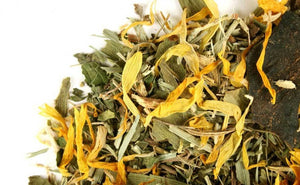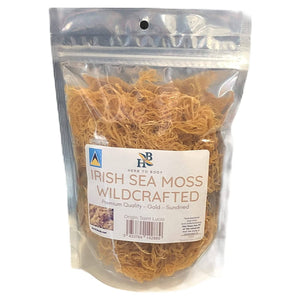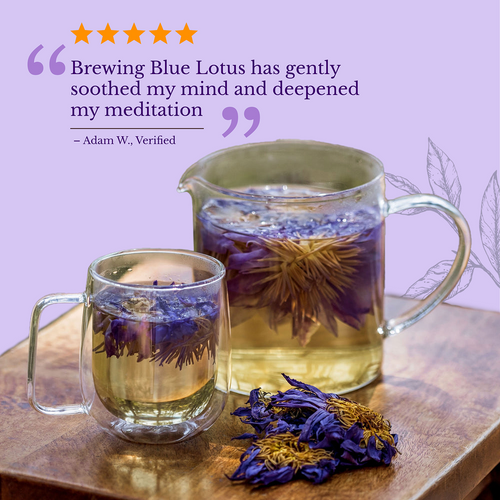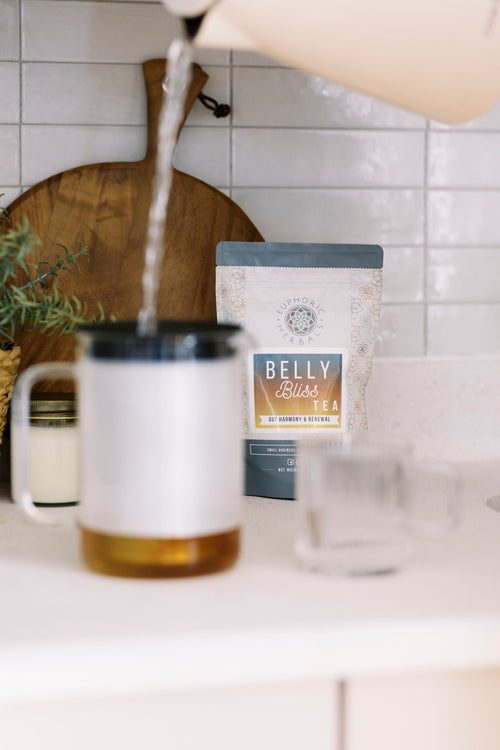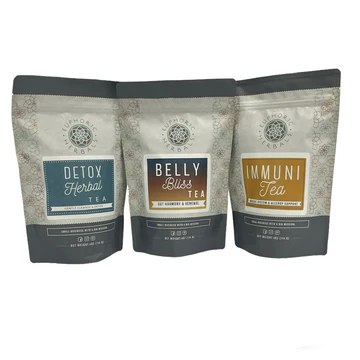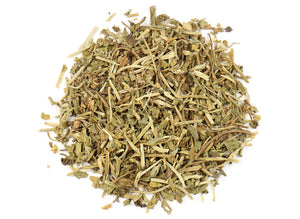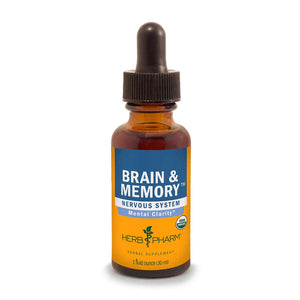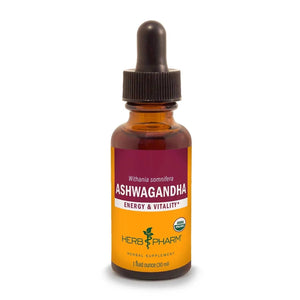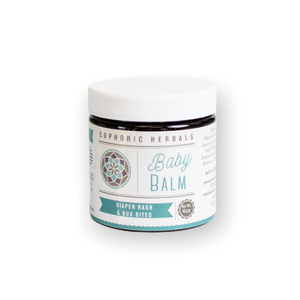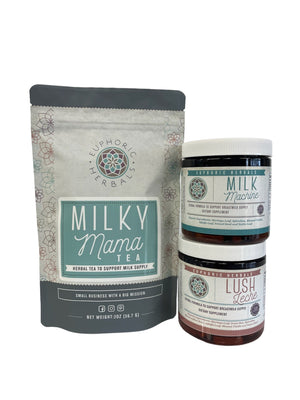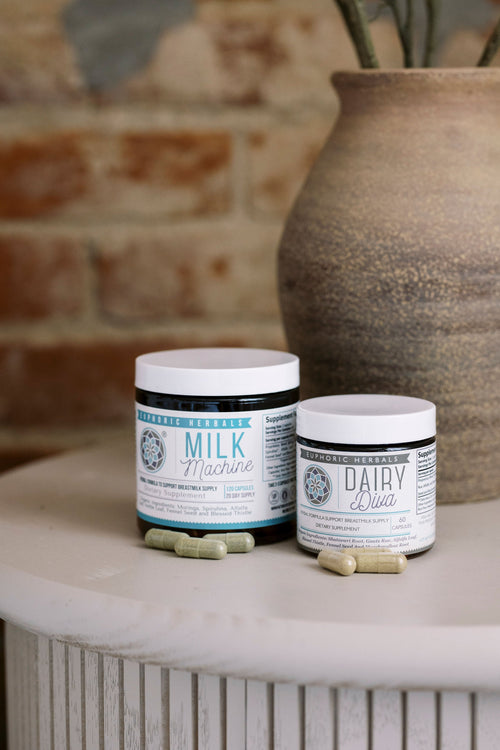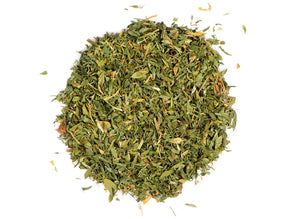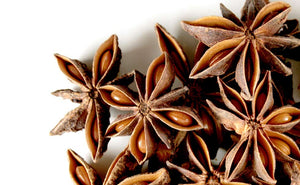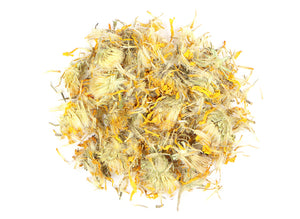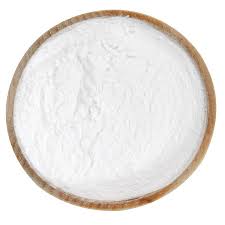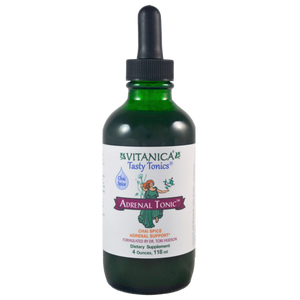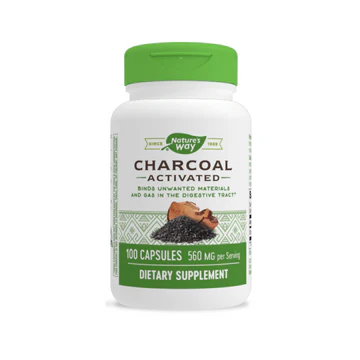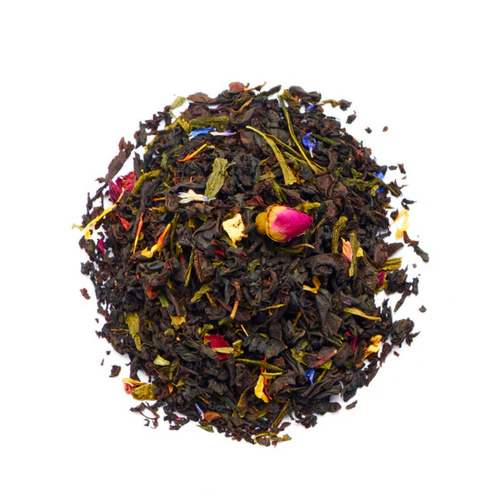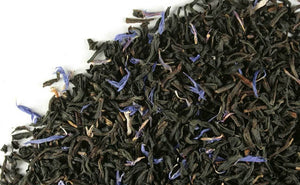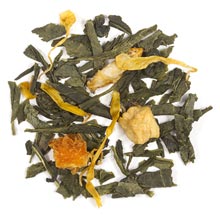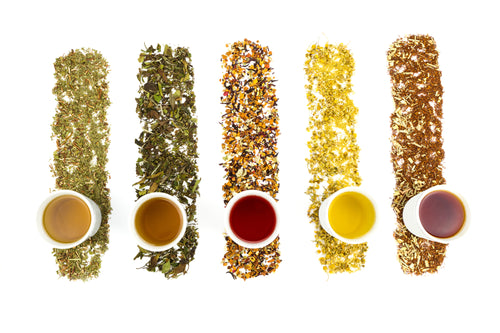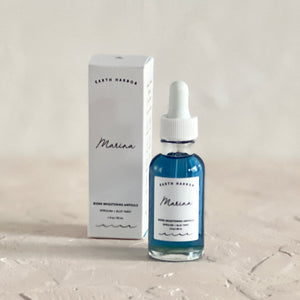As soon as you step into the world of herbalism, you're most likely going to run across terms you don't know. This is true whether you simply want to use herbal preparations or whether you want to try your hand at making them.
Herbal extracts are a good example of this. They have become very popular lately as an easy way to take herbs, and you'll see them for sale in all kinds of herbal and natural health stores.
However, many people aren't sure what an extract is or why you would want to take one.
Here's everything you need to know about herbal extracts, including how to use them and how to make one (if you want to).
What Is an Herbal Extract?
The technical definition of an herbal extract is any preparation that uses a solvent to extract beneficial properties from an herb or herbs. A solvent can be any one of several different types of liquid, and each one will extract a slightly different set of plant compounds from each herb.
As an example, a simple cup of tea is considered an herbal extract. It's made by using a solvent (water) to extract certain properties from herbs.
However, if you see herbal extracts for sale, they are most often in the form of tinctures—a specific type of extract.
Tinctures use a specific proof of alcohol (usually 80-100) as the solvent. They are often considered the most potent form of herbal extract because alcohol typically extracts the most properties from herbs (with some exceptions) and delivers those compounds to your body in an effective way.
Vodka is frequently the alcohol of choice because it allows the flavor of the herbs to come through, but brandy, rum, and gin can be used as well.
What Is a Glycerite?

A glycerite is one of the most popular non-alcoholic herbal extracts. It's made with vegetable glycerin instead of alcohol, which makes it perfect for children and adults who need to avoid alcohol.
Glycerites have a very sweet flavor. They are usually a little less potent than tinctures, but still very powerful and effective.
Though less popular, you can also find extracts made from apple cider vinegar. These are another non-alcoholic option that is easy to make at home.
Single vs. Compound Extract
There are two main types of extracts or tinctures you'll find: those made from a single herb and those made from a combination of herbs.
Which one is better depends on what you want to use the extract for.
If you want to try out a specific herb and see how you feel when using it, a single herb extract is the best choice. If you want to address a specific complaint or body system (like seasonal allergies or immune support), using an extract formulated with herbs specifically combined for that purpose is probably your best option.
When making a tincture at home, herbalists have different approaches to combining herbs. Some like to use a specific herb mixture to make the extract, while others prefer to make single herb extracts and then combine them afterwards.
Experimenting is really the only way to know for sure whether you prefer to use or make single vs. compound extracts!
Why Use Herbal Extracts?

Extracts, and specifically tinctures or glycerites, are used for several reasons.
While there are instances in which you would use or consume herbs in their whole form, it would take a lot of one herb to get a health-boosting effect (as opposed to just using herbs to flavor food or drinks).
By extracting the properties of herbs into a solvent, the herbs effectively become more concentrated. Even just making a simple cup of tea means you are getting more herbal compounds than you would get by consuming the herbs whole.
Tinctures and glycerites, which are much more concentrated than herbal tea, also have the benefit of being convenient and shelf stable. Just a few drops of either one can equal or surpass the amount of herb you would get in tea, and they can last for years if prepared correctly.
As a bonus, many plant compounds are made more available to your body when extracted. This isn't true in every case, but you will often absorb more of an extract than a whole herb that has to be digested and broken down by your body.
Finally, tinctures are usually the best way to take herbs that don't taste great. It would be difficult to drink a whole cup of tea made from a very bitter herb, but you can easily hide a few drops of tincture in something more pleasant tasting.
How to Use an Herbal Extract
Herbal extracts are very easy to use. You can take them "straight" by dropping the right amount on a spoon and consuming it, but those that are made from alcohol can be very strong.
A better way to take a tincture is by putting it in warm water, tea, juice, or anything else that dilutes it and/or disguises the flavor. You can even take it with a little raw honey to make it taste better.
Glycerites are easier to take as is because they are very sweet. However, if you have one for children, they still may not like the flavor of the herbs, so you'll probably want to hide it in a little juice or some kind of treat.
How Much Should You Take?

There's no straightforward answer to how much of an herbal extract to take. It depends on many factors: strength of the extract, what you're taking it for, whether it's for an adult or child, how your body reacts to the herbs, etc.
Ideally, the suggested amount to take daily will be listed on the bottle. If it gives you a range, start at the lower end and work up until you notice an effect. Even better, consult with an herbalist who can give you personalized advice.
If you have a homemade tincture, well-respected herbalist Rosemary Gladstar suggests using 1/4-1/2 teaspoon every hour for acute complaints (no more than 6 teaspoons a day) or 1/2-1 teaspoon three times daily for chronic complaints. (From Medicinal Herbs: A Beginner's Guide, pg. 46-47)
This is her recommended usage for adults and a good place to start if you can't find dosage guidelines elsewhere.
How to Make a Tincture
Extracts that are sold commercially are usually very standardized, but you don't need to make any complicated calculations or even weigh out your ingredients for a homemade version.
If you want to make your own tincture, here's what you'll need:
- Herb or herbs of choice (usually dried but fresh can also be used)
- 80 to 100 proof alcohol (or glycerin or vinegar)
- Clean glass jar (size depends on how much you want to make)
That's it! Now, here are the steps to make a tincture using the folk method:
- Chops your herbs if they are fresh or crush them lightly if they are dried (to help release the plant compounds).
- Fill your jar about 3/4 full with fresh herbs or 2/3 full with dried herbs.
- Pour your solvent over the herbs, almost to the top of the jar. Make sure the herbs are covered completely.
- Seal the jar with a tight-fitting lid and set it somewhere away from direct sunlight.
- Shake the jar a few times a week. If you notice the liquid decreasing, add more so that the herbs are always covered.
- Let your tincture sit for 4-6 weeks. Then, strain out the herbs and bottle the liquid.
By following these steps, you can make your own tincture in a little over a month!
Alcohol extracts usually last for several years, glycerites for 2-3 years, and vinegar-based ones for 1+ years.
Making Use of Herbal Extracts
Herbal extracts have been around for thousands of years (probably as long as herbalism has been). They are an effective way to take herbs for health purposes, and you can easily make one at home or buy a quality extract to save yourself the work. If you haven't yet, try one!
Disclaimer: This post is for informational purposes only. It does not constitute medical advice and should not be substituted for medical advice. Please consult your health care provider, herbalist, midwife, or naturopathic physician before taking herbs, supplements, etc. Here's the link to our full disclaimer.






